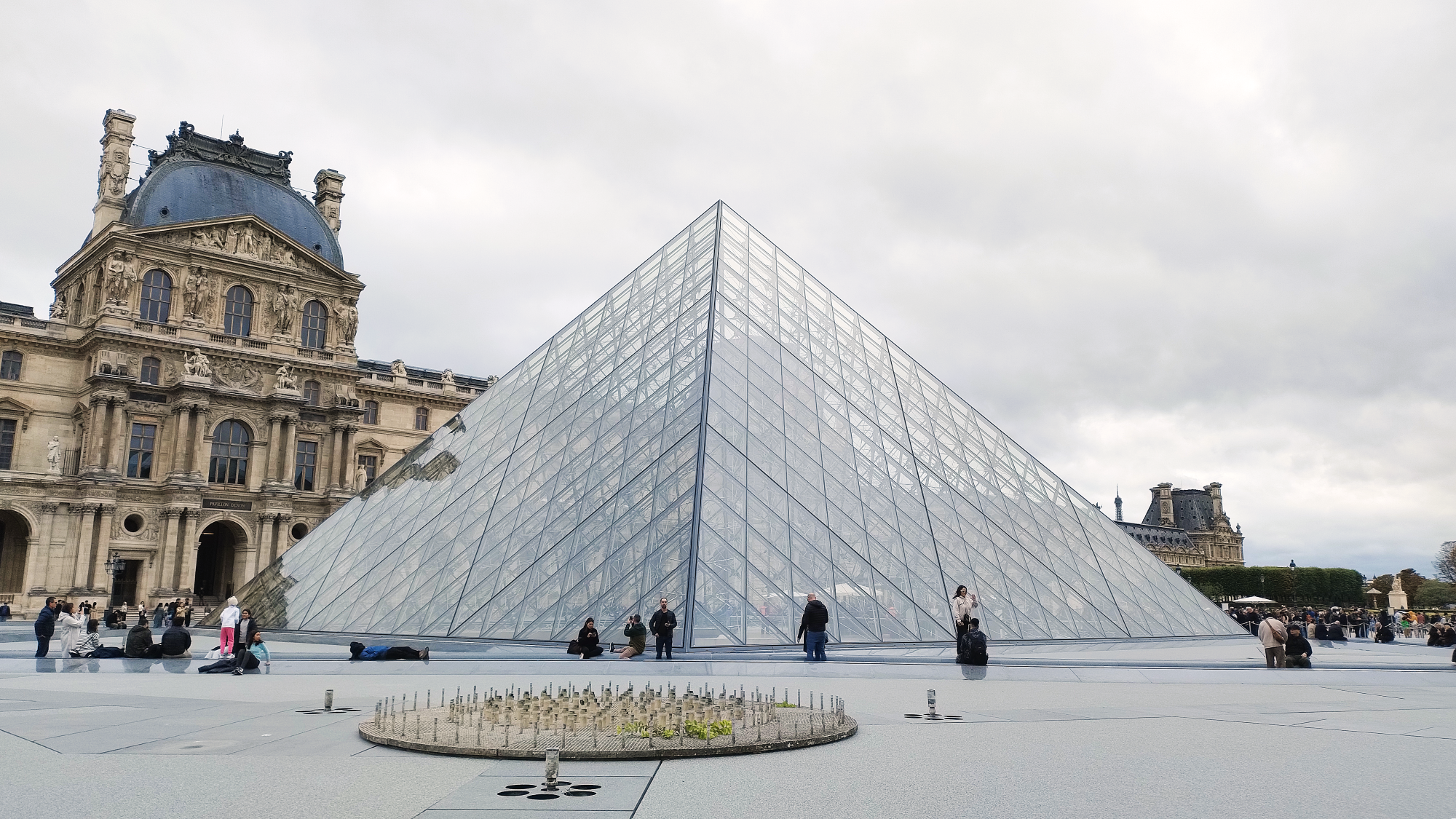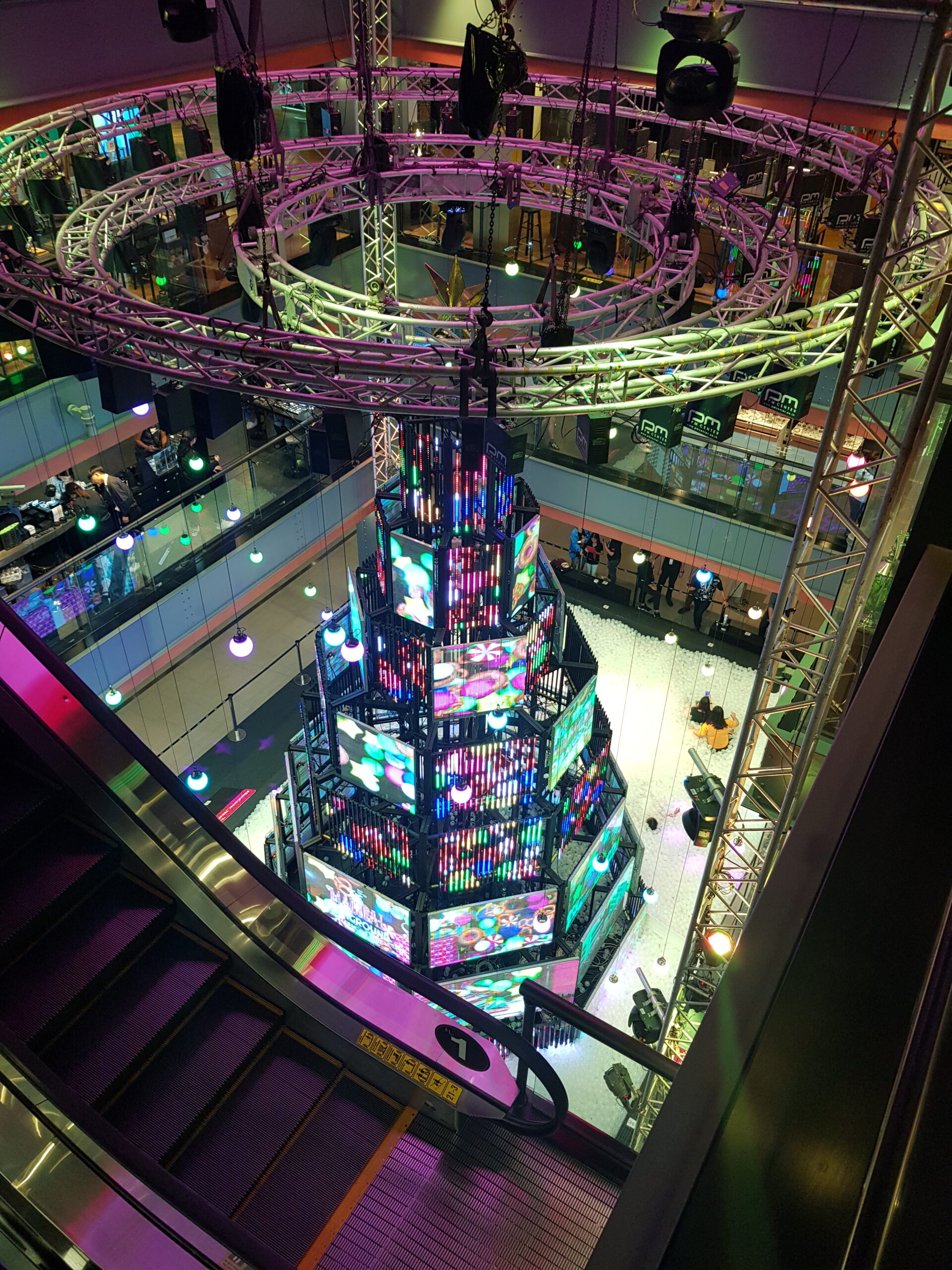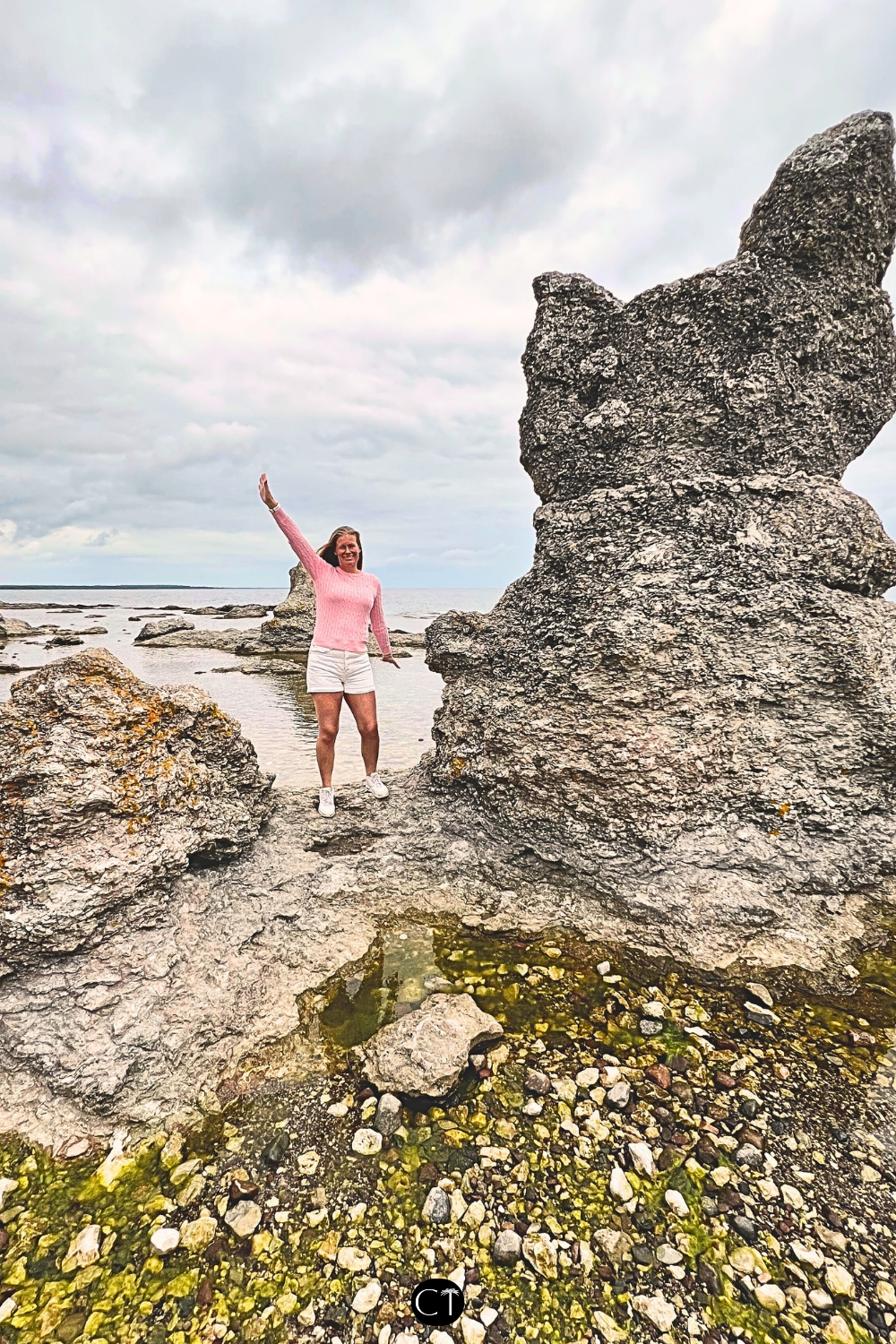When visiting Paris, the Louvre Museum is an absolute must-see. It’s the largest museum in the world, and with over 72 000 square meters (782 000 square feet) tired feet are almost guaranteed! Founded in 1793 during the French Revolution, the Louvre is now home to artworks dating from the 7th millennium BC to the 1850s, with over 38 000 displayed pieces. This is a museum you’ll want to revisit time and time again. There is much to see and enjoy, including some of the most famous pieces in the world. Here is what not to miss during your visit! We hope you’ll find the selection of masterpieces inspiring.
Tips For Planning Your Visit
It’s a great idea to pre-book tickets online, as there are many visitors. Even with pre-booked tickets, expect to stand in line for at least 30 minutes. We went there on a Monday at the beginning of October, and noticed less visitors compared to what we had seen in social posts from other days. The room housing the iconic painting Mona Lisa can be very crowded, sometimes making it difficult to enter. During our visit, the room was only half full. We were allowed to take pictures, and it was easy to do so that day. Remember to plan your trip to Paris, as the museum is closed on Tuesdays.
Getting There
We took the metro to Palais-Royal station (line 1 and 7), conveniently located just outside the museum. If you arrive too early like us, I recommend visiting the charming Café Saint Honoré around the corner for lunch or coffee. The museum itself is housed in an old palace, imagine the size! Finding the right entrance is really confusing, but after some time we found the right line in front of the Pyramid. There is a lot of security, so make sure to read the restrictions on bag sizes, and everything is scanned.
Upon entering the museum, you’ll reach a gigantic hall area with wardrobes, lockers and information desks. It can get quite warm in the museum, and there are benches where you can rest. There are also several cafés within the museum. Toilets are spread across the three wings, spanning five floors.
Don’t miss the opportunity to take the underground exit below the Pyramid, and visit the Carrousel du Louvre shopping centre, which is connected to the museum. We particularly enjoyed the pastries at the Caffe Concertto.
The Masterpieces
1. The Mona Lisa
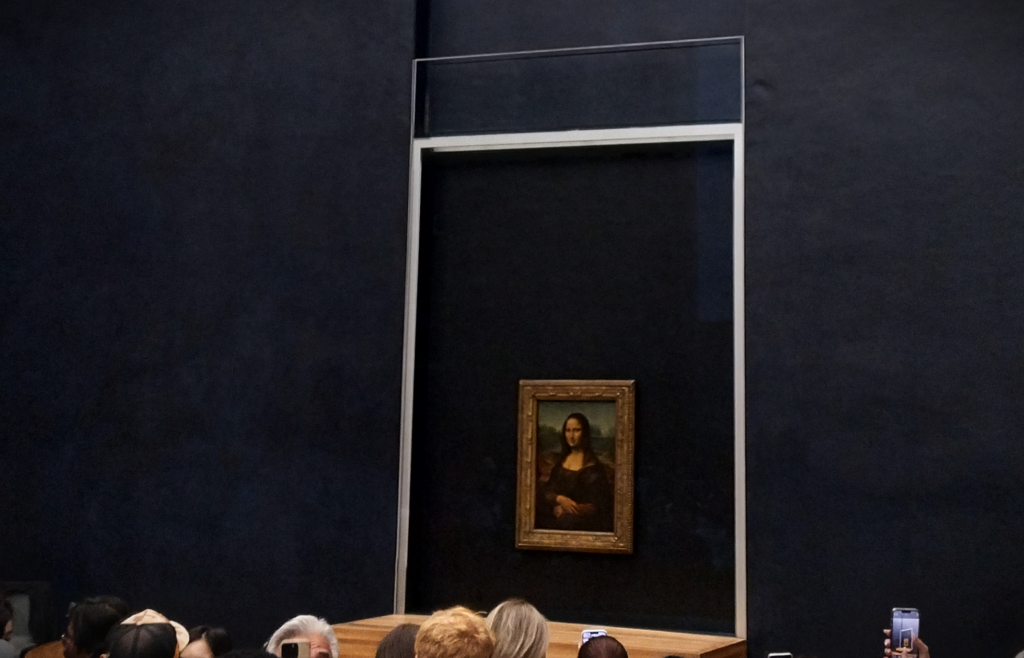
The Mona Lisa by Leonardo da Vinci is the world’s most famous painting. It was painted sometime between 1503 and 1519, when Leonardo was living in Florence. Her mysterious smile and unknowed identity have made the facination around the painting worldwide. The unique prortrait set the standard for all future portraits. It is quite small, only 77 by 53 cm, so it is worth getting close to the painting to a have a good view.
2. The Venus de Milo
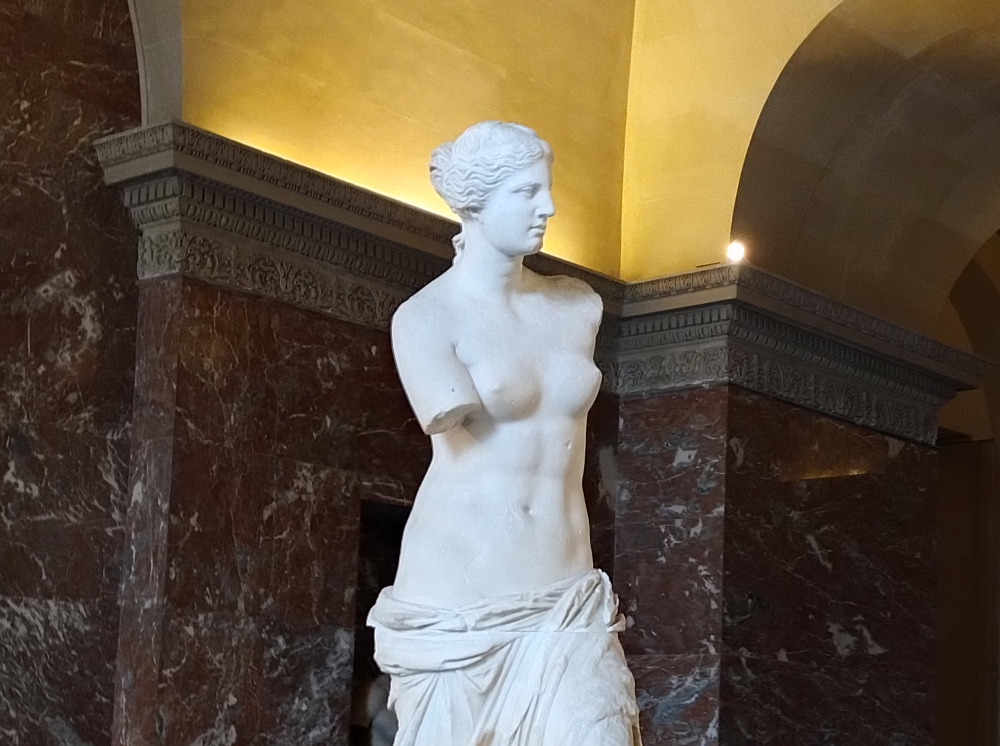
The Venus de Milo is a Greek marble statue believed to represent Aphrodite, the goddess of love and beauty. The exact dating is uncertain, but is believed to be in the 2nd century BC. Discovered in 1820, it has become one of the most famous ancient Greek sculptures in the world. This beautiful masterpiece also holds its mysteries, as the arms are missing. Scientists have proposed many restorations, and it is still unclear today what the statue originally looked like.
3. The Raft of the Medusa
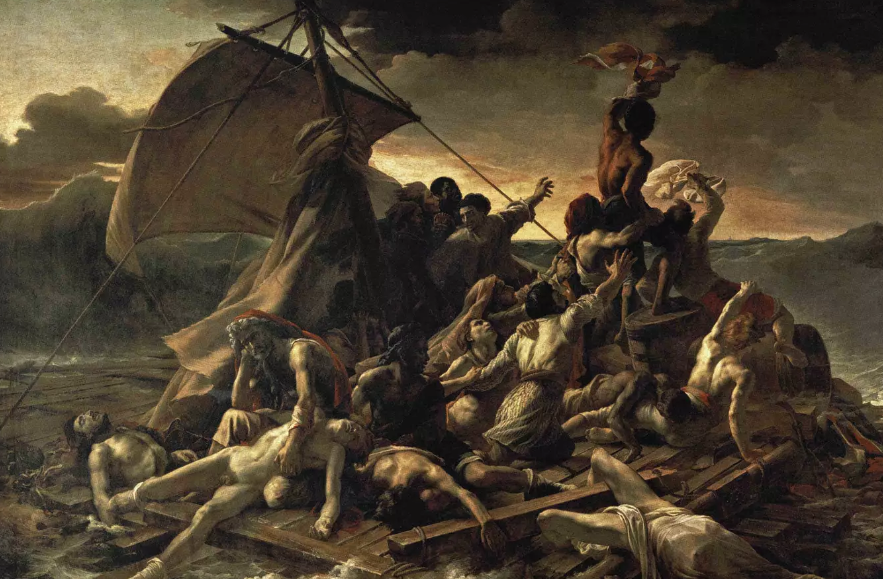
The Raft of the Medusa by Théodore Géricault is a huge painting depicting the remaining survivors on a raft after a French ship ran aground in Africa on July 2nd, 1816. Based on a true story, Gerault interviewed at least two survivors to capture the raw horror of the scene. The tragedy became even worse when it was revealed that a French military ship had passed by the raft without rescuing them. Many of the survivors died and those who still were alive even practiced cannibalism.
4. The Coronation of Napoleon
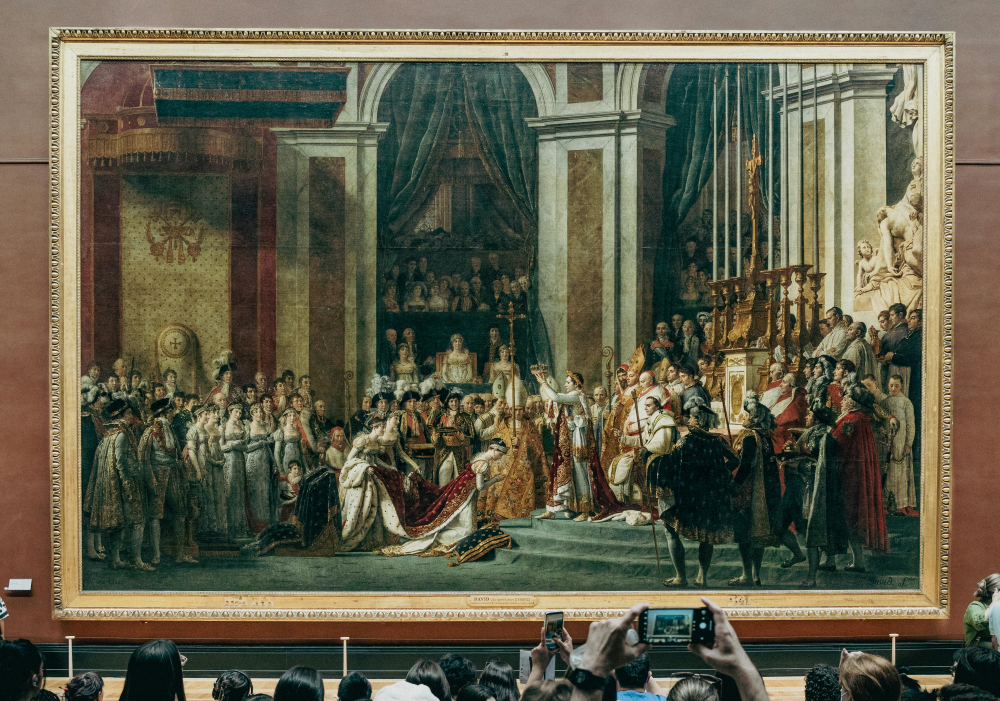
The Coronation of Napoleon by Jacques-Louis David completed between 1806 and 1807 is a historic painting, that depicts the consecration of Emperor Napoleon and the coronation of Empress Joséphine in Notre-Dame Cathedral on 2 December, 1804. The story tells that Napoleon took the crown off the pope and placed it on his own head. However, this was changed in the painting to depict the pope crowning them. Napoleon gave David instructions on how and who should be depicted, and changed the event that had taken place. The painting became a sucess to the public.
5. The Great Sphinx of Tanis
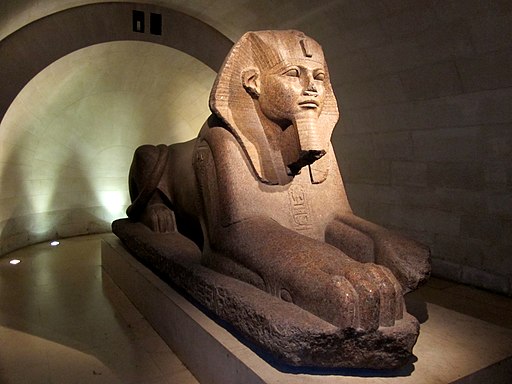
The Great Sphinx of Tanis, often called the guardian of the Louvre museum, is one of the largest sphinxes outside Egypt and one of the most famous masterpieces in the Egyptian Antiquities collection. Discovered in 1825 in the ruins of temple of Amun, which was the capital during the 21st and 23rd Dynasties, it’s dated somewhere 1915-1885 BC, which makes it more than 4 000 years old!
6. The Liberty Leading the People
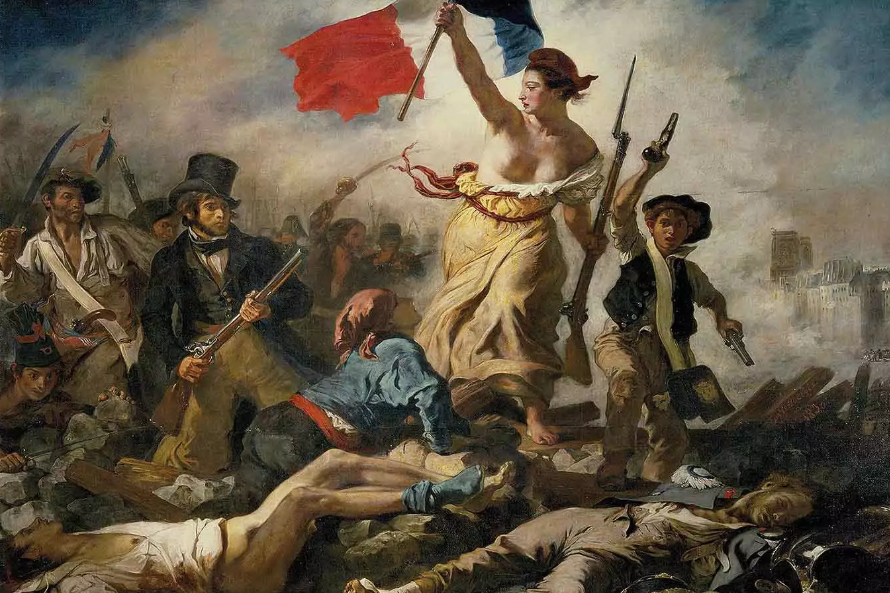
The Liberty Leading the People by Eugène Delacroix, created in 1830, is Delacroix’s most famous paiting. It’s a response to the political revolution in July 1830, when the people of Paris rose up against King Charles X. The painting depicts a woman representing Liberty, leading a crowd of people forward into battle. Delacroix deliberatly used colours in the French Tricolore flag, which was banned 1815-1830. The painting has become a symbol of French liberty and it remains one of the most iconic works of art in history.
7. The Winged Victory of Samothrace
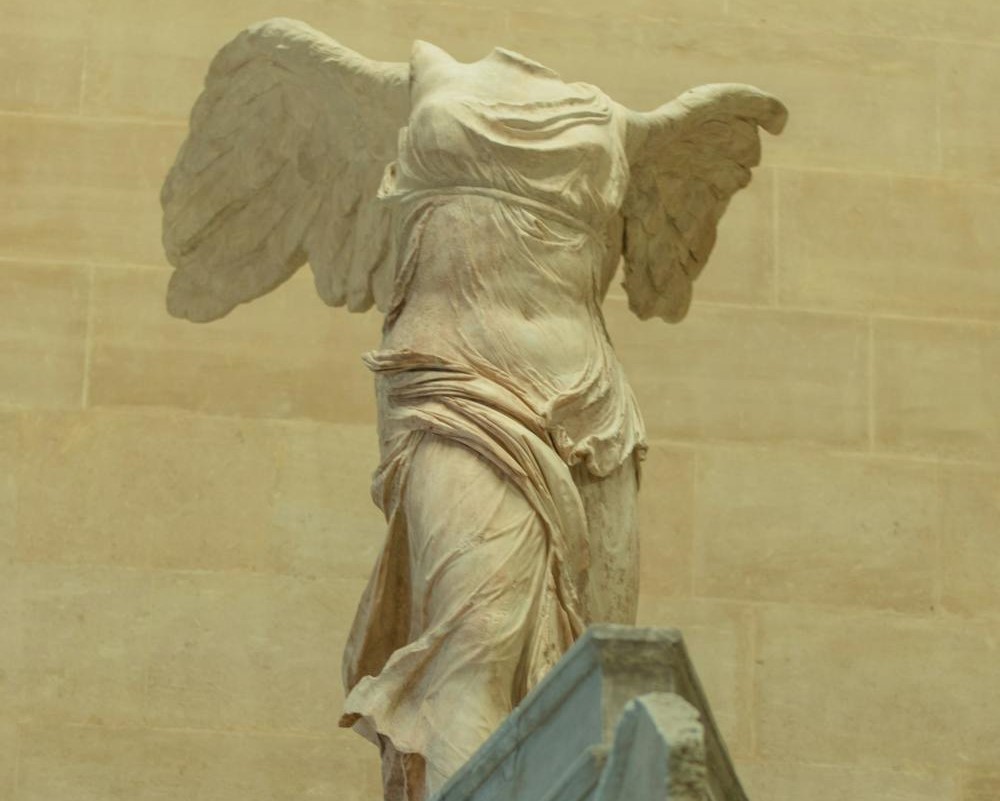
The Winged Victory of Samothrace in white marble is one of the most stunning sculptures of Hellenistic art, dated around 2nd century BC. It depicts the godess Nike, which means Victory. Originally discovered on the island of Samothrace 1863, the sculpture is reknowed for its dynamic pose, as if she has just landed on the prow of a ship. The flowing dress looks very natural, with a sense of movement in the wind. Her hand was discovered in 1950 and added to the collection. As you view the sculpture, be sure to walk the right side of the stairs, as it was designed to be viewed from the front-left side.
8. Napoleon on the Battlefield of Eylau
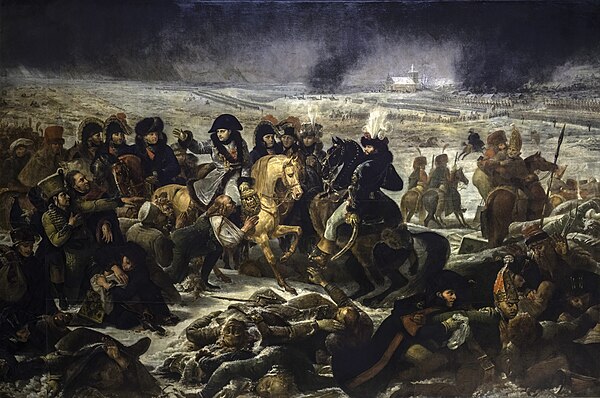
Napoleon on the Battlefield of Eylau by Antoine-Jean Gros, created between 1807 and 1808, became an icon of the emerging style of French Romanticism. The painting depicts the dramatic aftermath of the Battle of Eylau in 1807, a costly victory against the Russians. Napoleon is shown surveying the scene, his hand outstretched in a gesture of blessing towards his wounded soldiers. The scene is famous for its realistic portrayal of the event.

